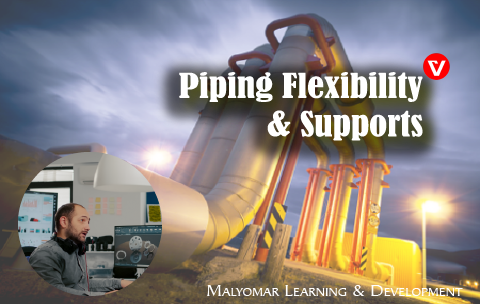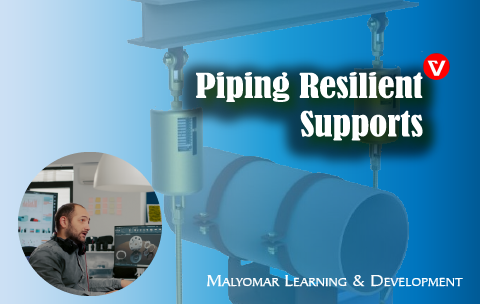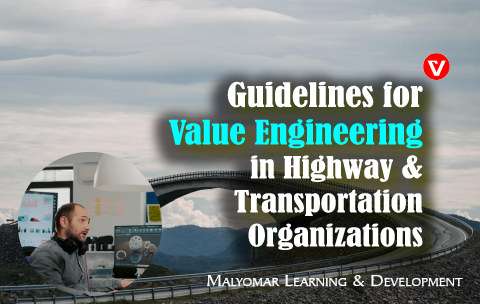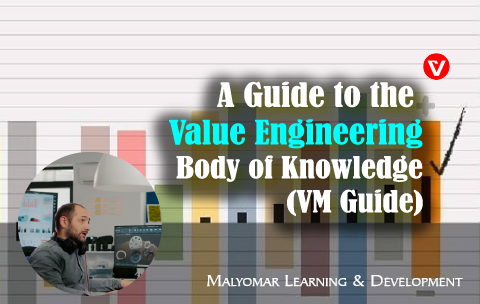Pipe Stress Engineering, Advanced
What you'll learn
Master Dynamic Simulation: Execute advanced time history analysis for transient events (Water Hammer, Relief Valve Dynamics) and Response Spectrum Analysis (RSA) for complex seismic loading.
Analyze Non-Linear Systems: Accurately model and analyze complex systems such as Jacketed Piping and systems connected to Vertical Vessels, managing crucial interface loads.
Evaluate Composite Materials: Apply advanced CAESAR II capabilities to model and perform static and seismic evaluation of Fiberglass Reinforced Plastic (FRP) pipe systems.
Integrate Value Engineering: Utilize stress analysis results to perform Life Cycle Cost (LCC) assessments, optimizing support spans and routing to reduce material and long-term OPEX (pumping power).
Advanced Code Application: Apply specialized analysis techniques for complex code scenarios and conduct detailed harmonic analysis for vibration mitigation.
EN 13480 Metallic Industrial Piping
What you'll learn
Gain a comprehensive understanding of the structure and requirements of the EN 13480 standard.
Apply the principles of the standard to the design and material selection of piping systems.
Understand the rules for pipe fabrication, welding, and non-destructive testing (NDT).
Learn the proper procedures for the installation and pressure testing of piping.
Develop expertise in preparing technical documentation and ensuring full compliance.
Roles of Piping Engineers during construction of petrochemical plants
What you'll learn
Analyze Construction Contracts: Differentiate between common construction contract types (e.g., EPC, Lump Sum, Cost Plus) and understand their impact on engineering scope and risk management.
Manage Field Engineering: Effectively resolve non-conformance issues, manage field design changes, and ensure the accuracy of as-built documentation.
Control Budget and Cost: Monitor piping installation progress against the budget, track material usage (MTO reconciliation), and evaluate potential cost overruns.
Oversee Quality and Inspection: Define and implement robust Quality Control (QC) plans, manage welding procedures, and coordinate mandatory pressure testing and NDT inspection activities.
Align Project Planning: Understand the principles of construction sequencing and scheduling to align engineering deliverables (Isometrics, Line Lists) with the contractor's execution plan.
Lead Field Supervision: Guide and mentor field teams, enforce project specifications, and ensure strict adherence to Health, Safety, and Environment (HSE) protocols during piping installation.
Piping Flexibility and Support
What you'll learn
Paving the way of piping designer to consider code provision.
Provide mandatory introduction to piping stress engineering.
Complete awareness on piping supporting system for construction and maintenance engineers.
Intermediate
Piping Resilient Supports. Selection, Spec’s, Procurement, Installation and Maintenance
$480.00
Piping Resilient Supports. Selection, Spec’s, Procurement, Installation and Maintenance
What you'll learn
Covers the whole cycle of resilient support, starting by design and ends at maintenance.
Understanding the true function and clear the popular myth.
Change the focus on pipe support from just a member to important asset.
Guidelines for Value Engineering in Highway and Transportation Organizations
What you'll learn
Provide strong background on Value Engineering in highway and transportation.
Support in establishment of Organization VE program.
Train VE team on program management.
A Guide to the Value Methodology Body of Knowledge (VM Guide)
What you'll learn
Provide strong background on Value Engineering in highway and transportation.
Support in establishment of Organization VE program.
Train VE team on program management.
Function Analysis Guide
What you'll learn
Provide strong background on Value Engineering in highway and transportation.
Support in establishment of Organization VE program.
Train VE team on program management.
Writing Technical Proposal to attract and win clients
What you'll learn
Understanding the core of your business
Enhancing proposal writing process
Client management
Intermediate
FAST Creativity and innovation, Rapidly Improving Processes, Product Development and Solving Complex Problems
$200.00
FAST Creativity and innovation, Rapidly Improving Processes, Product Development and Solving Complex Problems
What you'll learn
Rapidly improving process, product development and solving complex problems
Process Plant Layout and Piping Design, workshops with multi-disciplinary
What you'll learn
Translate P&IDs to Layout: Successfully convert Gas Sweetening Unit P&IDs and process flow data into preliminary equipment and piping layout plans.
Resolve Multi-Disciplinary Interfaces: Effectively manage and resolve design conflicts (clashes, load requirements) dictated by Structural, Mechanical, and Process advisors.
Validate Stress-Informed Design: Proactively apply stress analysis constraints (e.g., control displacement, manage nozzle loads) to optimize the thermal flexibility of the piping route.
Apply Safety and Operability Constraints: Incorporate specialized safety requirements for flammable/toxic service (e.g., access, venting, drainage) unique to gas processing facilities.
Generate Project Deliverables: Produce a complete set of integrated deliverables, including Plot Plans, Key Plans, and Stress-Ready Isometrics, for final technical review.
Execute a Full Design Cycle: Experience the complete workflow from Basis of Design (BOD) through to Final 3D Model Review and interdisciplinary sign-off.












